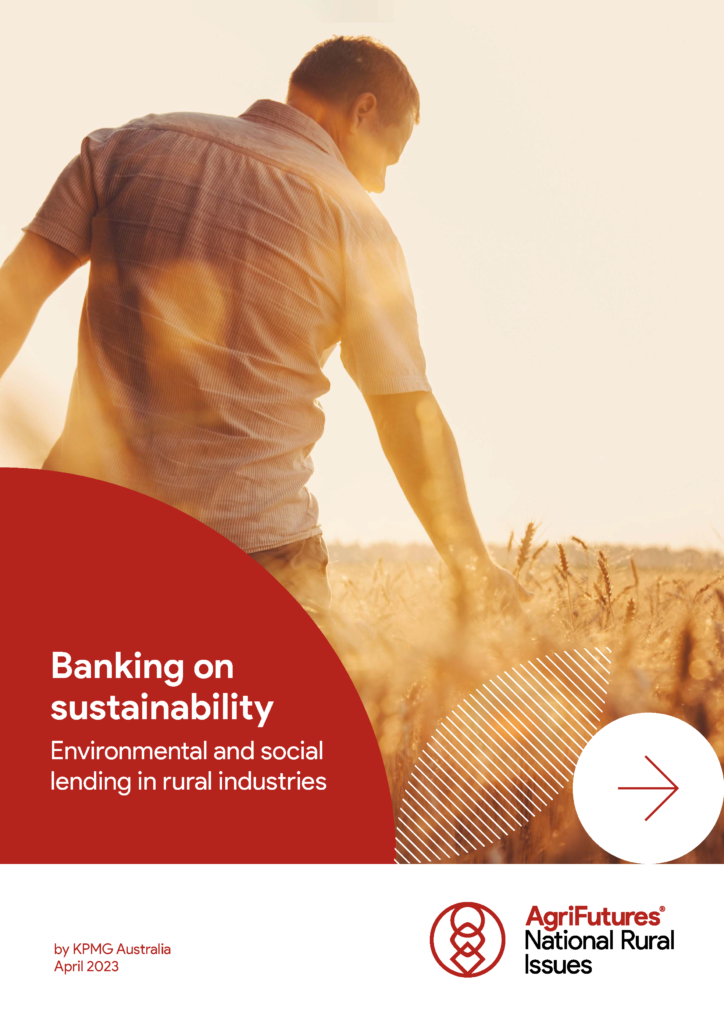AgriFutures Australia partners with Australian rural industries and the Australian Government to grow the long-term prosperity of Australian rural industries and communities through research, development and extension.
This report provides information on the environmental, social and governance landscape as it relates to the evolution of sustainability-linked lending. It paints a clear picture for producers on how financial institutions are evolving their lending products to integrate sustainability criteria so producers can best prepare their business to meet the requirements of these new products.
The work aligns with priority 13 of AgriFutures Australia’s Research and Innovation Strategic Plan 2022- 2027, which focuses on future-proofing Australian rural industries by identifying, understanding and responding to national challenges and opportunities that impact them.
In November 2021, leading global banks joined forces in a new initiative to support decarbonisation of the agricultural sector. Banks such as Barclays, Wells Fargo and Rabobank were among those that committed to supporting the transition to net zero. The aim of the initiative is to ensure portfolios in the food, agriculture and land use spaces contribute to achieving Paris Agreement goals and net zero emissions.
With the agricultural sector in Australia producing 13% of the nation’s greenhouse gas emissions, achieving net zero will require producers and their supply chains to measure their emissions against set baseline values, and subsequently report them. To respond to these expectations, many agricultural commodities have developed sustainability frameworks as a tool or guideline as to how to implement change over time to reach certain environmental milestones. It is timely to understand how financial institutions will use these industry-developed frameworks to guide their investment decisions and help producers measure their sustainability efforts. Finally, with these frameworks in place, there is a need to reveal the granular elements of how producers measure against recognised metrics within them.
The purpose of the work was to investigate the use of existing sustainability and animal welfare metrics across the agriculture sector, and identify where potential future industry metrics may need to be used. The report explores and reveals sustainability lending criteria already in use, criteria that might be applied by lending institutions in the future, and what this means for producers.
Insights are provided on what motivates lending institutions when developing their assessment, measurement and monitoring criteria for sustainability and social/welfare products. Further, the report details how producers can measure baseline values and improvements, and explores technologies that may help them monitor and report the how they’re progressing against criteria to meet lending institutions’ requirements.
The insights and key learnings from this report should enable Australian producers to understand current and future sustainability reporting requirements, and what they may and will need to show to demonstrate their commitment to sustainability and social/welfare measures.





